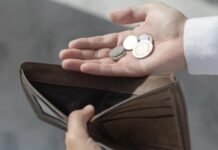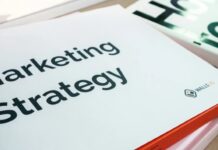U.S. consumers are are still buying more than last year, but spending growth is slowing as the economy settles down amid higher interest rates intended to reduce inflation, according to the National Retail Federation.
“The economy was clearly more resilient in the first half of this year than many expected, and the consumer environment has been positive as inflation has slowed,” NRF Chief Economist Jack Kleinhenz said in a press release. “Nonetheless, there are ongoing economic challenges and questions, and the pace of consumer spending growth is becoming incrementally slower.”
Even though consumers are still spending, they are under financial pressure and have been adjusting how much they buy while also shifting from goods to services. Job and wage gains have certainly counterbalanced inflation, but the stockpile of savings accumulated during the pandemic is dwindling and no longer providing as much spending power as previously available, according to Kleinhenz.
A Continued Increase in Prices and Interest Rates
The August issue of NRF’s Monthly Economic Review found that the U.S. gross domestic product grew at a 2.4% annual rate adjusted for inflation in the second quarter, following 2% growth in the first quarter. That’s in line with the 2.1% seen for the full year in 2022 and significantly slower than 6% in 2021.
Consumer spending, which makes up about 70% of GDP, played a major role in the continued expansion. But year-over-year spending growth slipped from 4.2% in the first quarter to 1.6% in the second. Retail sales as calculated by NRF – excluding automobile dealers, gasoline stations, and restaurants – were up 3.1% unadjusted year over year in the second quarter. That kept up with inflation, but was below the 4% growth for the first six months of the year.
The Personal Consumption Expenditures Price Index – the Federal Reserve’s preferred measure of inflation – was at 3.7% year over year in the second quarter. That was down from 4.9% in the first quarter, but still far above the Fed’s target of 2%. The Fed responded by raising rates another quarter-point last month to a range between 5.25% and 5.5%, the highest level since January 2021.
While the Fed still faces “a tricky job” in trying to control inflation without triggering a recession, “the current framework clearly increases the chance of a slower economy,” Kleinhenz said in the release.
The full impact of rising interest on the economy is difficult to predict, but revolving credit (mostly credit cards) contracted by nearly $1 billion in June and consumers are less likely to use credit cards to fund purchases as rates rise, Kleinhenz said in the release.
The labor market is also in lower gear. The 185,000 jobs added in June was the lowest number since mid-pandemic in December 2020 and the 187,000 jobs added in July was only slightly better. There were 9.58 million job openings in June, down slightly from 9.62 million in May.





